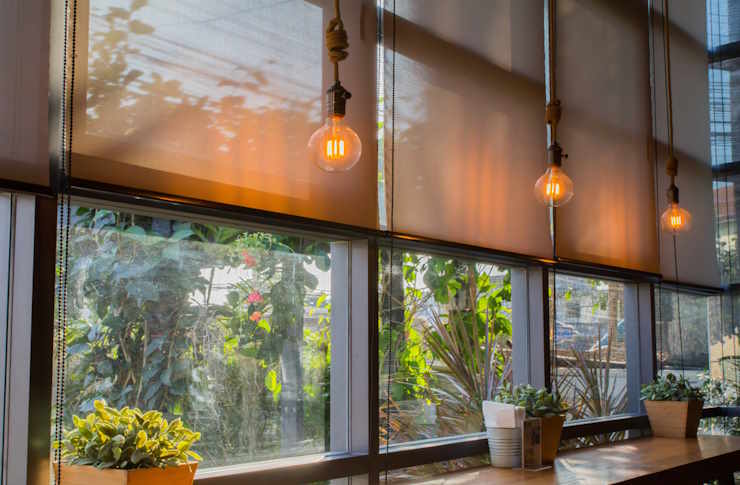Bedroom Lighting: Illuminating Comfort and Style
Bedroom lighting plays a crucial role in creating the perfect ambiance for rest, relaxation, and rejuvenation. Far more than just a functional necessity, thoughtful lighting design can transform a bedroom from a simple sleeping space into a personal sanctuary. The art of bedroom illumination has evolved significantly over the years, influenced by technological advancements, changing aesthetics, and a growing understanding of how light affects our well-being. From the warm glow of bedside lamps to the subtle wash of recessed fixtures, each lighting element contributes to the overall atmosphere and functionality of the room. As we delve into the world of bedroom lighting, we'll explore how different techniques and fixtures can enhance both the form and function of your personal retreat.

The Layered Approach to Bedroom Lighting
Creating a well-lit bedroom involves more than just installing a single overhead light. The key to a versatile and inviting space lies in layering different types of lighting. This approach typically incorporates three main categories: ambient, task, and accent lighting. Ambient lighting provides overall illumination and sets the base level of brightness in the room. This can be achieved through ceiling-mounted fixtures, recessed lights, or even wall sconces that bounce light off the ceiling. Task lighting is more focused, designed to illuminate specific areas for activities like reading or getting dressed. Bedside lamps, desk lamps, and vanity lights fall into this category. Accent lighting adds depth and visual interest to the room by highlighting architectural features, artwork, or decorative elements. This can include picture lights, LED strips, or small spotlights.
The Impact of Color Temperature
The color temperature of light plays a significant role in how we perceive and feel in a space. Measured in Kelvin (K), color temperature ranges from warm (2700K-3000K) to cool (5000K-6500K) tones. For bedrooms, warmer tones are generally preferred as they create a cozy, relaxing atmosphere conducive to sleep. Cooler tones, which mimic daylight, can be energizing and are better suited for task areas or morning routines. Many modern lighting solutions offer adjustable color temperatures, allowing you to transition from energizing cool light during the day to soothing warm light in the evening. This flexibility can help support your natural circadian rhythm and improve sleep quality.
Smart Lighting Solutions for the Modern Bedroom
The advent of smart home technology has revolutionized bedroom lighting. Smart bulbs, switches, and fixtures can be controlled via smartphone apps or voice commands, offering unprecedented convenience and customization. These systems allow you to create preset scenes for different activities or times of day, automatically adjust brightness and color temperature based on the time, or even simulate a sunrise for a more natural wake-up experience. Some smart lighting systems can integrate with other smart home devices, such as thermostats or security systems, for a fully connected and automated living environment. While the initial investment in smart lighting can be higher than traditional options, the long-term energy savings and enhanced functionality often make it a worthwhile consideration for modern bedrooms.
Natural Light Management
While artificial lighting is essential, the importance of natural light in bedroom design should not be overlooked. Proper management of natural light can significantly impact the room’s atmosphere and your overall well-being. Window treatments play a dual role in this regard. During the day, sheer curtains or adjustable blinds can help diffuse harsh sunlight while still allowing natural illumination. At night, blackout curtains or shades can create the darkness necessary for quality sleep. Some innovative window solutions, such as smart glass that can change opacity at the touch of a button, offer the best of both worlds. Additionally, strategically placed mirrors can help amplify natural light, making the room feel brighter and more spacious during daylight hours.
Lighting for Small Bedrooms
In smaller bedrooms, lighting takes on an even more critical role in creating a sense of space and comfort. Wall-mounted fixtures, such as sconces or swing-arm lamps, can provide necessary illumination without consuming valuable floor or surface space. Recessed lighting or track systems offer flexible, space-saving solutions for overall room illumination. For those with limited nightstand space, pendant lights suspended from the ceiling can serve as both decorative elements and functional reading lights. In compact rooms, it’s also important to consider the reflective qualities of surfaces; lighter wall colors and strategically placed mirrors can help bounce light around the room, creating an illusion of more space.
Sustainable Lighting Options
As environmental consciousness grows, so does the demand for sustainable lighting solutions in the bedroom. LED technology has made significant strides in recent years, offering energy-efficient options that don’t compromise on light quality or aesthetics. Many LED bulbs now mimic the warm glow of traditional incandescent bulbs while consuming a fraction of the energy. Solar-powered lighting options, while still somewhat limited for indoor use, are becoming increasingly viable for bedrooms with access to natural light. For those interested in natural materials, fixtures made from sustainable woods, recycled glass, or even biodegradable materials offer eco-friendly alternatives to conventional lighting options. When selecting sustainable lighting, it’s important to consider not just the energy efficiency of the bulbs, but also the manufacturing processes and materials used in the fixtures themselves.
In conclusion, bedroom lighting is a multifaceted aspect of interior design that goes far beyond mere functionality. By understanding and implementing various lighting techniques, considering color temperature, embracing smart technology, managing natural light, adapting to space constraints, and prioritizing sustainability, you can create a bedroom environment that is not only visually appealing but also supportive of your well-being and daily routines. As lighting technology continues to advance, the possibilities for customizing and optimizing bedroom illumination will only expand, offering exciting opportunities to enhance our most personal spaces.






